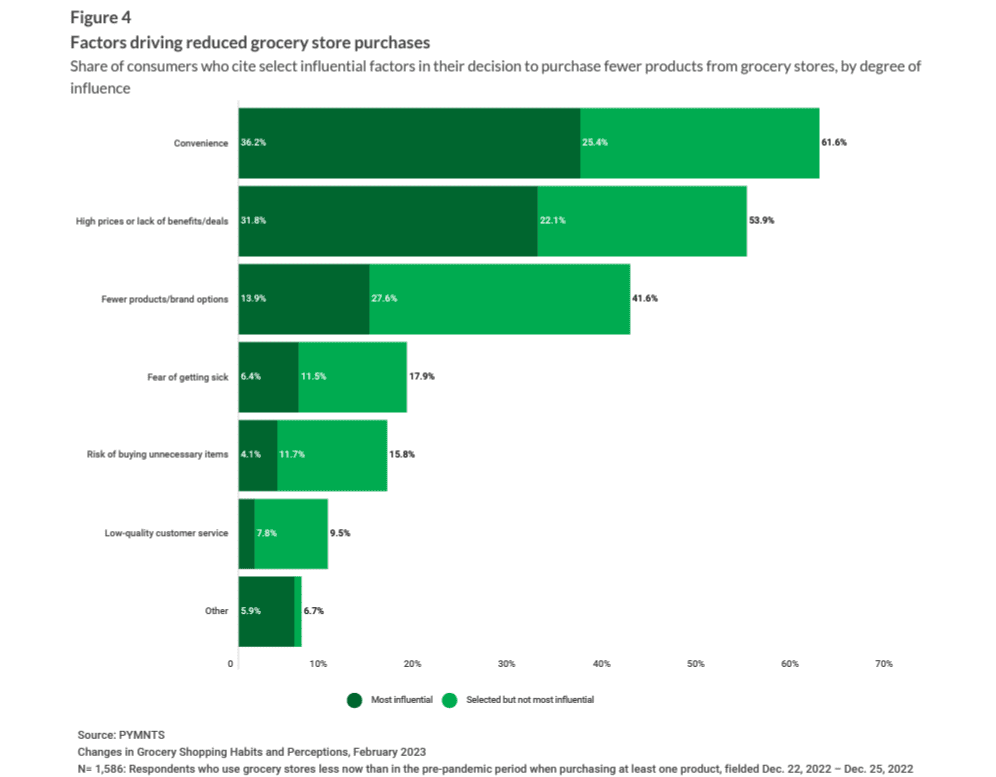The Consumer Convenience Mandate: Why Kiosks Should Not Be Grocers’ Only Innovations
If consumers’ feelings are any indication, the immediate cost-cutting benefits grocers can receive from reduced personnel may be better spent on loyalty-focused innovations.
Traditional brick-and-mortar grocery stores are having an especially tough time these days, feeling the weight of consumer inflation concerns that drove disappointing December grocery sales. Adding to these pressures is the increasing adoption of online grocery shopping and competition from both dollar stores and Amazon’s center-aisle category expansion.
So it makes sense that the first cost-cutting pivot by grocers has often been to invest in traditional tech like self-checkout, despite other more innovative alternatives. However, with an ever-increasingly competitive race for consumer share, a more sustainable long-term innovation investing strategy may be found in the oldest adage in retail: the customer is always right. As the recent PYMNTS’ “Changes in Grocery Habits and Perception” report reinforces, shoppers’ main driver for coming in-store is pretty clear: convenience.

Fortunately for grocers, meeting this consumer demand for convenience through loyalty-focused methods may have the same revenue benefits as more traditional approaches. One may be expanding payment choices to include digital wallets, which PYMNTS’ research has found consumers are increasingly adopting for their ease of use. And as reported in the PYMNTS’ “Connected Wellness” study series, 24% of consumers had used digital wallets to pay for their most recent grocery purchase when surveyed during the second quarter of 2022.
Some grocers are investing heavily in personalization to drive loyalty. For example, Albertsons has been expanding its mobile offerings to fend off eCommerce competition and bring its shoppers in-store. This week, the grocery giant announced the launch of its fitness app, which integrates with trackers such as Apple Health and Fitbit. It also includes pharmacy offerings and goal-tracking features — all to encourage mobile engagement with Albertsons’ selected brands. And this innovation investment bet seems to have a real chance to pay off, as the company’s third-quarter earnings included a 16% growth in loyalty membership.
When it comes to self-checkout alternatives, Instacart this week rolled out its first Scan & Pay checkout system at Foodcellar Market, a grocer in Queens, New York. The platform is the first to offer this own-device in-store mobile feature. Consumers scan as they go, check out when they are done and show an employee a QR code as they leave as proof of payment. Although past track records regarding similar technology have been mixed, grocers have still been experimenting to find the right tool to enhance customer convenience.
Taking a futuristic route, German grocery chain Trigo and tech startup Rewe partnered to open their first fully autonomous store in December. Located in Munich, the “Pick & Go” locations allow shoppers to check in via phone scan on entry, pick the items they would like, and walk out with their accounts charged automatically.
For grocers, especially independent and small chains, it may be tempting to invest in the tech that will offer the quickest cost-cutting. But when it comes to long-term strategies to retain loyalty and maintain a stable revenue stream, aligning with what the customer wants could benefit the business more than traditional technologies.
